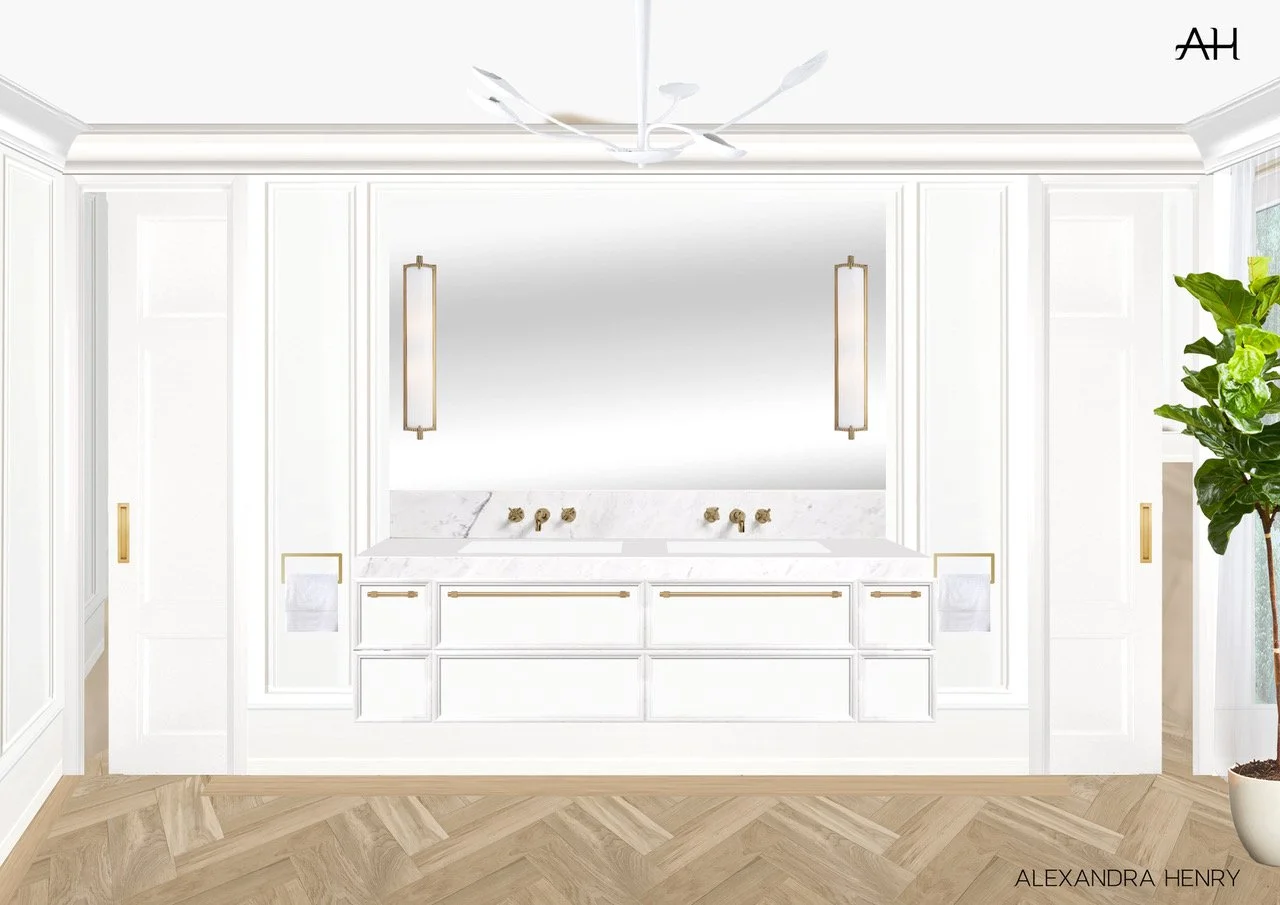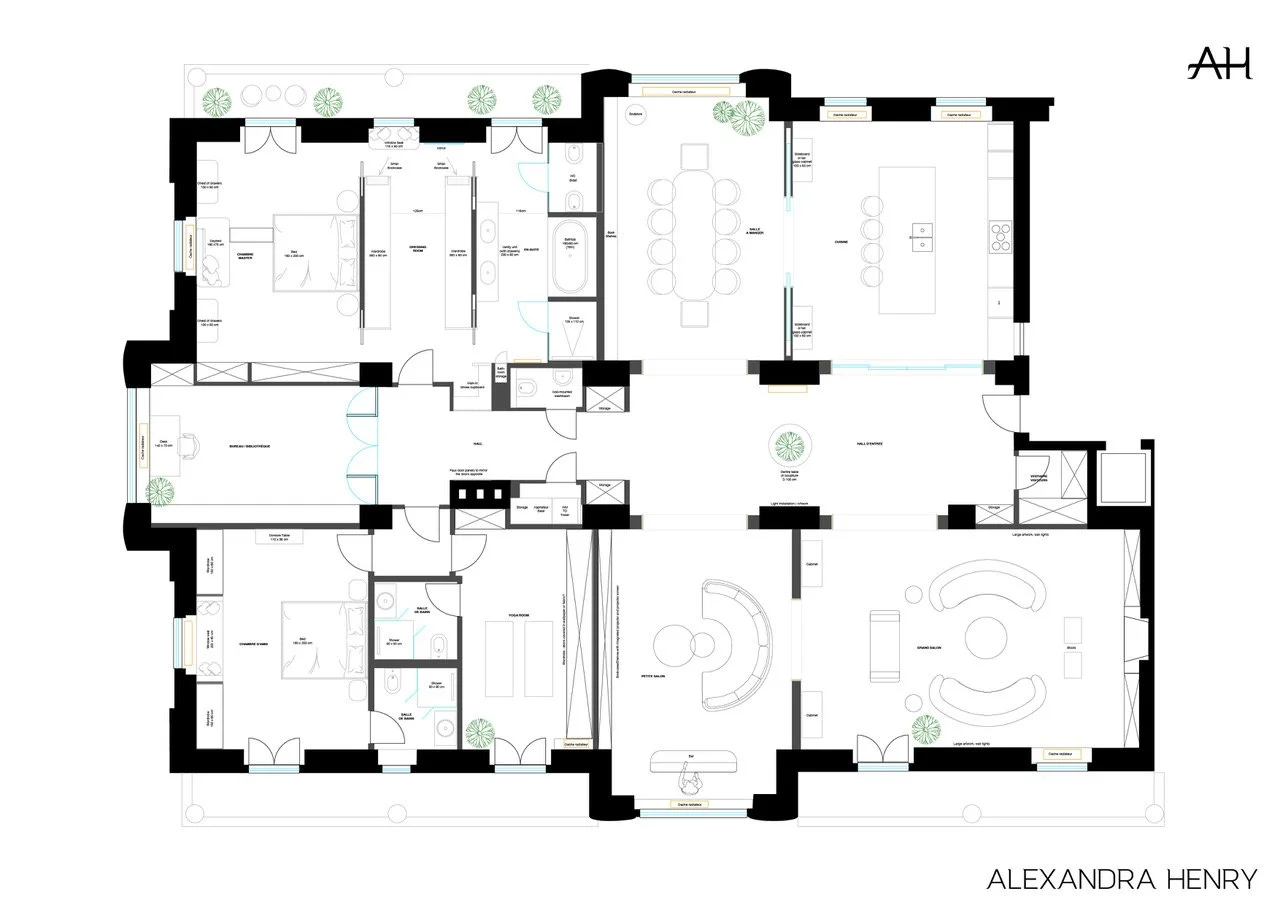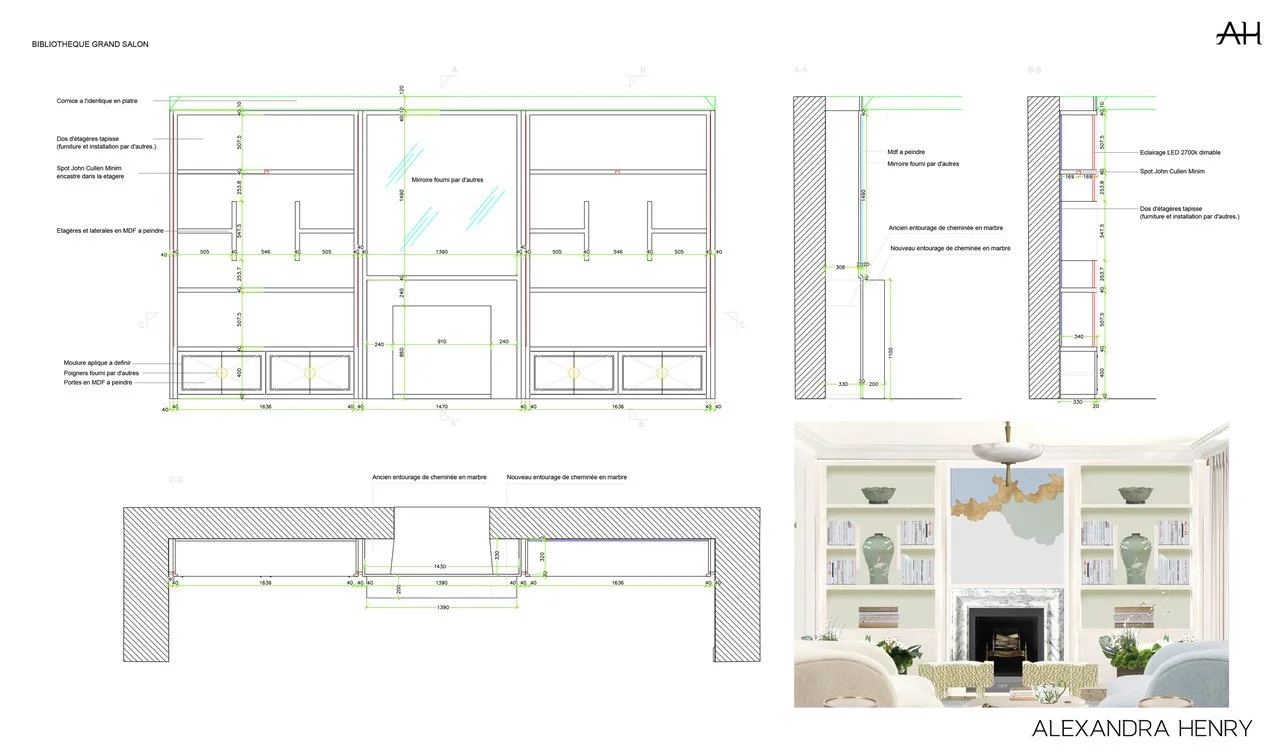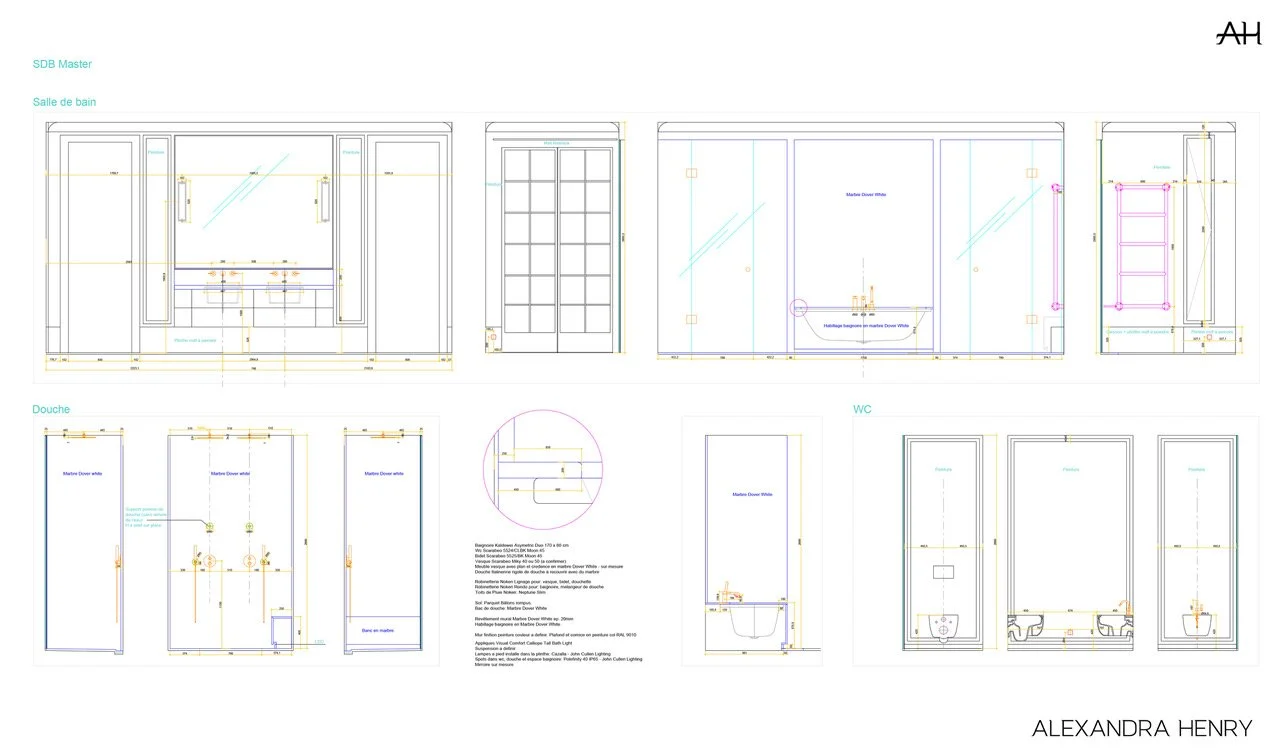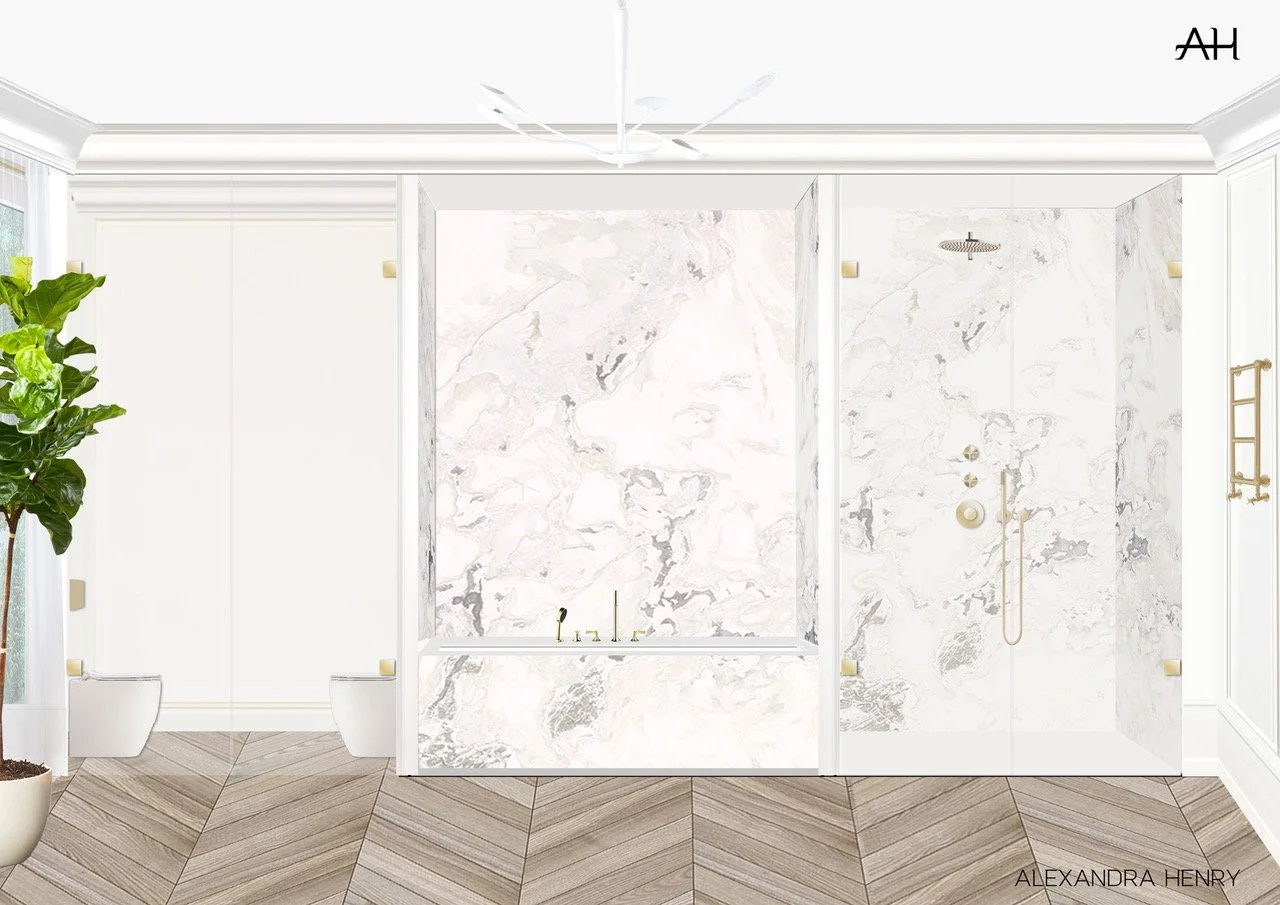Designing in Harmony: How Interior Designers and Architects Create Cohesive Spaces
At Alexandra Henry Interiors, we believe that the most enduring spaces are rarely created in isolation. They come to life through thoughtful collaboration, where interior designers and architects bring together complementary expertise to serve a shared vision. Behind many of our most rewarding projects in Geneva lies this kind of partnership. A partnership built on mutual respect, clear communication, and an understanding of how each discipline can enhance the other.
As an established interior designer in Geneva, we understand the nuances required to balance architectural integrity with interior elegance. Our collaborative approach ensures that homes across Switzerland are not only visually harmonious but also deeply aligned with how our clients want to live.
But successful collaboration does not happen by chance. It requires structure, process, and a willingness to engage from the earliest stages of a project. When these elements are in place, it results in cohesive, elegant interiors where function and feeling are given equal weight.
Mutual Respect and Shared Territory
The foundation of any productive relationship between designer and architect is respect, not just for the person, but for the expertise they bring. While the roles are distinct, the best outcomes emerge when both sides recognise where their responsibilities intersect.
Architects lead on structural layout, compliance, and spatial coordination. Designers contribute insight into the lived experience of a space. Designers think about how light moves through a room, how circulation impacts comfort, and how scale, texture, and materiality contribute to the personality of the space.
There is often magic in the overlap. When designers are included early in the architectural planning, they can help anticipate how layout decisions might impact furnishings, lighting, or window treatments. These insights, offered at the right moment, can prevent costly changes further down the line. As one architect recently said during a joint debrief: “A conversation about where the sofa was going completely changed how we approached the glazing.”
Establishing Roles and Boundaries Early
Clarity at the outset saves time, money, and energy. It is essential that both designer and architect, along with the client, understand who is responsible for what. This avoids duplication, missed steps, or confusion around scope and fees.
At Alexandra Henry Interiors, we prefer a model where responsibilities are shared across the entire project rather than split room by room. When the architect leads one part of the house and the designer another, the risk is a patchwork effect at best and Frankenstein’s monster at worst. Cohesive in pockets but lacking overall harmony.
Instead, we believe in a collaborative rhythm, one that allows for shared decision-making without overlapping authority. Clear, respectful agreements allow both parties to do their best work, while keeping the client’s interests at the centre.
Communication That Keeps Pace With the Project
Design is not a linear process. A decision made about the staircase might influence ceiling height, which then affects the placement of wall lights or window treatments. Without regular communication, these small shifts can accumulate into major coordination issues.
That’s why we advocate for consistent communication, not only at scheduled milestones but throughout the design and construction process. Weekly video calls, shared digital platforms like Trello or Basecamp, and centralised document repositories all help to keep the team aligned.
One of our internal mantras is: "No surprises." That means if MEP routes shift or structural changes are proposed, we want to be informed, and we extend the same courtesy to our partners. It is often the smallest details that hold the greatest potential for frustration or delight.
Adaptive Leadership
The question of who leads is important and the answer is fluid. At the start of a new build or full renovation, the architect may take the lead, especially during planning, permitting, and early structural work. As the project progresses into joinery, finishes, and layout refinement, the designer’s voice often becomes more prominent.
Effective collaborations allow for this handover of leadership. They recognise that at different moments, different kinds of expertise are required. It is not about ownership, but about serving the project and the client in the best way possible.
Building the Right Team
Both designers and architects bring trusted craftspeople to their projects. Rather than choosing one network over the other, we believe in building a blended team that reflects the needs of the client and the demands of the brief.
Whether the project requires intricate joinery, highly technical lighting systems, specialist stonemasonry, or custom upholstery, our priority is to ensure that the right people are involved, and that their aesthetic, technical and collaborative sensibilities are aligned with the project.
We are always happy to recommend trades, and equally open to working with others proposed by the architect. What matters is not where they come from, but how well they serve the vision.
Designing with Completion in Mind
Too often, critical design decisions are made before furniture layouts or lifestyle requirements have been properly considered. The result? A radiator placed where curtains need to fall, door swings interrupting furniture placement, or fixed lighting plans that ignore how the space will actually be used.
This is why we advocate for integrated design from the outset. Before planning applications are submitted or construction drawings finalised, we bring the whole team together to review the project holistically.
Our goal is to think ahead, ensuring architectural decisions support not just visual cohesion, but daily functionality, down to the smallest details.
Keeping the Client at the Centre
Design projects can span months. During that time, clients look to their team for guidance, advocacy, and clarity. Designers often become the primary point of contact, supporting clients through everything from mood boards to material testing to final delivery.
That closeness gives designers a valuable perspective, one that often helps to translate the client’s hopes into architectural decisions. In this way, the designer can act as a bridge, ensuring the technical aspects of a build remain closely aligned with the personal experience the client is seeking.
As one of our long-time architectural collaborators put it: "It’s not just about aesthetics. Designers often know what the client really wants, even before the client has said it out loud."
Interior Design in Geneva: The Value of Collaboration
For clients embarking on renovations or new builds in Switzerland, particularly in Geneva, working with an integrated team of architects and interior designers is not just helpful, it is essential.
At Alexandra Henry Interiors, we are proud to be a trusted interior designer in Geneva, known for creating refined, functional, and deeply personal spaces.
Whether you are a homeowner planning your next chapter, or an architect looking for a collaborative partner, we invite you to get in touch.

